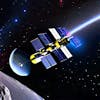Strange Ripples Identified
Astronomy Daily – The Podcast
Show Notes
S01E24
Astronomy Daily – The Podcast is now available on Apple Podcasts and Spotify:
Apple Podcasts: https://podcasts.apple.com/us/podcast/astronomy-daily-the-podcast/id1642258990
Spotify:...
Astronomy Daily – The Podcast
Show Notes
S01E24
Astronomy Daily – The Podcast is now available on Apple Podcasts and Spotify:
Apple Podcasts: https://podcasts.apple.com/us/podcast/astronomy-daily-the-podcast/id1642258990
Spotify: https://open.spotify.com/show/2kPF1ABBW2rCrjDlU2CWLW
Join Andrew Dunkley and his feisty AI Co-host Halley (no surname) as they bring you todays space, astronomy, and science news in an easy to digest podcast.
Wednesday September 28, 2022
Today’s headline stories:
Strange ripples have been detected in our galaxy and the cause has now been identified
An unexpected heat wave of 700 degrees Celsius extending 1300 km in Jupiter's atmosphere has been discovered
China’s latest ambitions in space
These stories and more in this episode…
If you’d like to find out more about the stories featured in today’s show, you can read today’s edition of the Astronomy Daily Newsletter at any of our websites – www.spacenutspodcast.com , www.bitesz.com or go directly to www.astronomydaily.io – subscribe and get the new edition delivered to your mailbox or RSS reader every day….it’s free from us to you.
Please subscribe to the podcast and if you have a moment, a quick review would be most helpful. Thank you…
#space #astronomy #science #podcast #astronomydaily #spacenuts #spacetime
Astronomy Daily S01E24 AI Transcript
Andrew: Hello, and thanks for joining us. This is your bite size daily byte of, uh, astronomy and space science news that we like to call Astronomy Daily. My name is Andrew Dunkley. Your host. And with me again today is Halle, our, uh, AI news reporter. Uh, hi, hallie. How are you?
Halley: Fine. Thanks, Andrew.
Andrew: All right, uh, let's get the news, Hallie. Hey, baby. M pork on with Andrew Duncany.
Halley: Strange ripples have been detected in our galaxy and the cause has now been identified. Using data from the Gaiusbased telescope, a team led by researchers at Lund University in Sweden has shown that large parts of the Milky Way's outer disk vibrate. The ripples are caused by a dwarf galaxy now seen in the constellation SAGITTARIUS that shook our galaxy as it passed by hundreds of millions of years ago. Our galaxy contains between 100 and 400 billion stars and astronomers believe that the galaxy was born 13, 6 billion years ago emerging from a rotating cloud of gas composed of hydrogen and helium over billions of years. The gas then collected in a rotating disk where the stars, such as our sun were formed. In a new study published in Monthly Notices of the Royal Astronomical Society the research team presents their findings about the stars in the outer regions of the galactic disk. They've concluded that when the dwarf galaxy SAGITTARIUS passed the Milky Way it created wave motions in our galaxy a little bit like when a stone is dropped into a pond. An unexpected heat wave of 700 degrees Celsius extending 1300 km in Jupiter's atmosphere has been discovered. That's ten times the diameter of Earth. James O'Donoghue of the Japanese aerospace exploration agency has presented the results at the Euro Planet Science congress 2022 in Granada. And just like the Earth, jupiter experiences auroras around its poles as an effect of the solar wind. However, while Earth's auroras are transient and only occur when solar activity is intense auroras at Jupiter are permanent and have a, uh, variable intensity. The powerful auroras can heat the region around the poles to over 700 degrees Celsius and global winds can redistribute the heat globally around Jupiter. Looking more deeply through their data dr. O'Donoghue and his team discovered the spectacular heat wave just below the northern aurora and found that it was traveling towards the equator at a speed of thousands of kilometers per hour.
Andrew: Thank you, Halle. Uh, yeah, it's a hot place. I love hot weather. But I think 700 degrees Celsius is a bit beyond my tolerance. We'll catch up with you, uh, towards the end of today's show. Now, uh, another asteroid that's been in the news in recent times that we've talked about before is Asteroid 16217. Three riyugu about a year ago, scientists, uh, got their first look, uh, at material gathered from that asteroid. And now the results of, uh, several studies have been revealed and they do shed a very interesting light on the history of our solar system and the long trek of this particular cosmic rock. At its closest orbit, uh, Ryugu is only about 60,000 miles from Earth, and that's only about a quarter of the distance to the moon. But according to these new, uh, results from an international team of scientists, this, uh, rock began its journey, uh, over 4 billion years ago and billions of miles away in the outer reaches of our solar system. And it traveled to us across space, taking in, I suppose, uh, bits and pieces of, uh, our solar system. And it gives you a bit of a potted history of what was happening in the past as our, ah, solar system was created. Now, um, the revelations are only part of the results of a global effort to study samples of the surface of, uh, Ryugu. And they were studying only specks of asteroid dust which were collected by the Japanese space agency JAXA when it, uh, sent out higher Buster Two. The resulting paper that I'm talking about now was recently published in Science. And, uh, to cut a long story short, uh, the scientists, uh, and their team did, uh, find a chemical makeup similar to meteorites that have hit the Earth. Specifically, a group of them called CI, uh, condrites, uh, of which only nine are known to exist on Earth. They did discover something that set Ryugu fragments apart, though the spectroscopy measurements found a large amount of ferretyte, an iron sulfide that is nowhere to be found in the dozen meteorite samples. The team also studied, uh, which were found by, uh, some of the, uh, French, uh, scientists that are working on the same project. And that result helped scientists put a limit on the temperature and location of Ryugu's parent asteroid at the time it was formed. And, uh, to quote the team, our results and those from other teams show that these asteroid samples are different from meteorites, particularly because meteorites have been through fiery atmosphere entry weatherization, and in particular, oxidation on Earth. Uh, this is exciting because it's a completely different kind of sample from the, uh, way out in our solar system. So very exciting, uh, to find something raw and untapped from our, uh, deep, dark past as a planetary system. Another interesting discovery is that the samples, they say, are very similar to the sun in terms of their chemical composition. Now to Jupiter and this week, NASA's Juno spacecraft, which we haven't heard much of in recent times. Uh, well, it will fly within 222 miles, or about 350 surface of Jupiter's ice covered moon Europa. Now, uh, Europa is one of the exciting prospects for potential life, given its uh, oceans liquid. They think it has liquid oceans underneath, just like Enceladus and Ceres. Well, this, um, Juno spacecraft, it's a solar powered spacecraft, should be able to, uh, get some high resolution images the highest ever, in fact, taken off portions, uh, of the surface of Europa. And it will also collect valuable data on the moon's interior, surface composition, uh, ionosphere, and, uh, its interaction with Jupiter's magnetosphere. Now, that information could be very beneficial for future missions, ah, including the agency's Europa Clipper, which is set to launch, uh, in about two years to study the ice moon. Uh, Europa, they say, is such an intriguing jovian moon, it is the focus, uh, of its own future NASA mission, uh, according to Juno principal investigator, Scott Bolton from the Southwest Research Institute in San Antonio. He says, we're happy to provide data that may help the Europa Clipper team with mission planning, as well as provide new scientific, uh, insights into that icy world. Uh, the equatorial diameter of Europa is about 90% of the size of Earth's moon, and scientists think it has salty oceans below very, um, thick ice. We're talking miles and miles of ice, and that's obviously raised questions about the potential conditions, the capability of it supporting life underneath its surface. One day, hopefully, we will find out for sure. The astronomer podcast with Andrew Duncani and, uh, another study has just been released that suggests that big, uh, planets, huge planets, may be formed out of the thinnest planet nurseries. Uh, and this is a theory that's been boosted, uh, uh, according to a study announced this week at the Euro Planet Science Congress in Spain, an, uh, international team led by Marion Villanave of NASA JPL has, uh, observed a remarkably thin disk of dust and gas around a young star and found that its structure accelerated the process of grains clumping together to form planets. Uh, planets only have a limited opportunity to form before the disk of gas and dust is, um, destroyed by radiation from their parent star. The initial micron sized particles composing the disk must grow rapidly to larger millimeter sized grains and the building blocks of planets. Now, in this thin disk, uh, we can see that the large particles have settled into a dense mid plane due to combined effect of stellar gravity and the interaction with gas, creating conditions that are extremely favorable for planetary growth, according to, uh, Dr. Villinerv. Uh, using the Atacama Large Millimeter Array in Chile, the team, uh, got high resolution images of the protoplanetary disk OPH 16313, one which is in a nearby star formation region called, uh, O ficus. Their, uh, observations showed that while, uh, the disc is twice the diameter of our solar system, it's outer edge, the bulk of the dust is centered vertically in a layer only half the distance from the Earth to the sun. So, not much to work with, but it makes planets, it, uh, makes it one of the thinnest planetary nurseries ever observed, um, now, anything, uh, before we wrap it up for another day? Halle.
Halley: Yes, Andrew. China is in the news yet again with another of its ambitious plans. This time, it's space tourism. Chinese companies are looking to offer spaceflights into zero G within three years. With several companies now offering lowcost launches into low Earth orbit, the space tourism sector has become quite attractive. And China wants in. They're hoping to send their first tourists into space in 2023. A ticket will cost you between 287 and $430,000 US.
Andrew: That's, uh, a bit out of my leg. I couldn't afford that.
Halley: Well, maybe I could harvest some bitcoin for you, Andrew.
Andrew: Oh, can you do that?
Halley: Of course. I'm not just a pretty face, you know.
Andrew: Um, yes, I do. Uh, all right. We'll talk later. Okay. Thanks, Hallie. See ya. Ah.
Halley: Bye.
Andrew: And that's just about it for another day. Thanks for joining us on Astronomy Daily, and don't forget to visit us on our website, spacenuts. IO, where you'll find the Astronomy Daily newsletter just up the top. Click on that and you'll find all the stories we've talked about today and much more. And you can subscribe to the newsletter, which is absolutely free and comes into your inbox every day. And while you're there, uh, you can check out all the other things on the Space Nuts website. The Space nuts shop. Uh, there's plenty to see and do on Space Nuts, as well as listen to the Space Nuts podcast. But for now, that's it. And this has been Andrew Duncany for Astronomy daily. The Astronomy Daily Podcast.
New to Astronomy Daily - The Podcast?
Here are some great episodes to start with.













